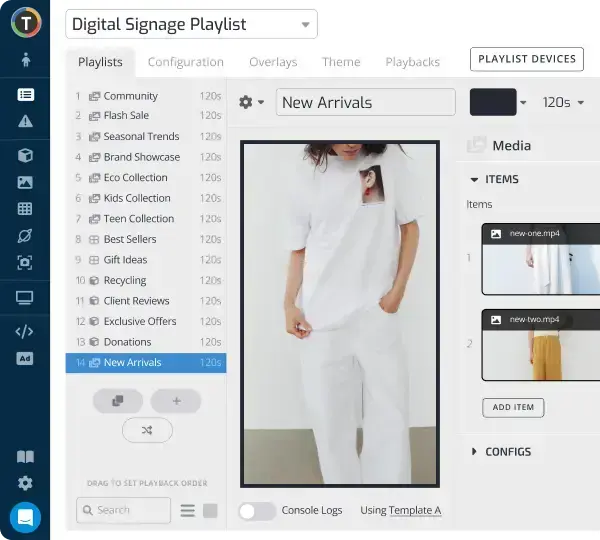8 Internal Communication Strategies for Distributed Teams
WRITTEN BY: TelemetryTV, 04-30-2020

Corporate communications strategies are oftentimes tricky to navigate—and that’s especially true if you’re managing a business with distributed teams. If your message isn’t being effectively communicated or is somehow getting lost in the noise, then what is even the point?
That’s why it’s massively important that your internal communication strategy is thoughtfully planned out and executed. Not only does this include using tried-and-true strategies, but it also means using the best tech and tools available to today's businesses seeking to manage distributed teams.
That way, everyone involved in your business, from your in-house workers to your remote employees, stay on the same page and as productive as possible.

With that said, here are our top 8 internal communication strategies and best practices to follow for effective communication in the workplace, so you can get a leg up on the competition.
1. Use metrics
Putting a wealth of data at employees’ fingertips can take your business’ overall performance from good to great. That’s why your corporate communications strategy needs to prioritize the use of metrics whenever possible.
One way to do this is by utilizing digital signage dashboards across your offices that display things like key performance indicators (KPIs) in an easily digestible format for all your employees to see.
2. Make it visual
On that same note, you should opt for visual internal communications whenever you get the chance. The simple reason being that most people in the world identify as visual learners. On top of that, we can guarantee that a visually pleasing piece of messaging will go a lot further in the minds of your employees than say a dull slab of text in the form of an email.
Make it easy and convenient for your employees to consume the information they need, not mind-numbing.

3. Keep it simple
A good rule of thumb to keep in mind when crafting an internal communication strategy is that less is almost always more. Instead of trying to get a veritable feast of information on your employees’ plates, focus on giving them what’s important, when it’s important. That way, your workplace communications will be lean and easily consumed.
The number one problem we see companies make when it comes to effective communication in the workplace is trying to do too much, which only leads to the most important messages being lost in the noise.
4. Set goals
Getting information to your employees in a timely and effective manner is probably the most important part of the internal communication strategy. But don’t overlook the bigger picture. Regularly setting goals and objectives—both long-term and short-term—is also hugely important.
Things like progress updates, team and individual performance objectives and recognition, milestones, and deadline reminders can go a long way at keeping your employees motivated and aligned with your company’s overall goals.
5. Use the best internal communication tools
Internal communication tools have come a long way since the days of the carrier pigeon. Today you can find a nearly limitless well of great team communication tools designed specifically for creating effective communication in the workplace. So why not take advantage of them?
Some of the best examples of internal communication tools are workplace chat and organizational apps like Slack and Trello, cloud technology software like Google Drive, and visual communications platforms like digital signage.
Specifically, TelemtryTV's desktop app for remote teams is designed with all of the features needed for complete collaboration. This includes user-specific permissions and content options, screen overrides for important updates, device provisioning, APIs, and even flexible deployment across a variety of devices. It’s the ideal collaborative software for teams that can’t physically meet.
6. Solicit feedback and ideas
The first step to an effective internal communication strategy for distributed teams is mapping out a detailed game plan: what do you want your employee-facing communications to achieve? How will you reach those goals? What internal communication tools will you need to aid you? Etc.
But planning can only go so far. Once a plan is put into motion, road bumps ensue, unforeseen circumstances arise, or the plan simply isn’t good enough in certain areas and needs improvement.
The solution? Provide communication channels to your employees so they can submit helpful feedback and ideas for anything and everything in your workplace. This includes anything from your internal communications strategy and company policies to your sales tactics, marketing campaigns, product designs, and so on.
7. Promote collaboration
Solid internal communications shouldn’t just foster a collaborative environment inside each of your specific departments, but should also promote inter office communication and collaboration. The same holds true for collaboration across your collaboration across your many teams—remote or otherwise.
By encouraging and giving your company’s many moving parts the ability to easily communicate with each other, they’ll be able to share fresh insights and ideas, in turn making your business work in unison like a well-oiled machine instead of a highly segmented endeavour.
8. Showcase industry news and trends
Your internal communications should also make a habit of keeping everyone in the loop of the latest industry news and updates. That way, your employees stay up-to-date on competitor performance and tactics as well as the trends driving the industry.
Also, don’t be afraid to tout any positive press your brand is receiving on social media or in the news. It’ll show your employees that all their hard work is being recognized, which will motivate them to keep it up in the future.

Looking to boost your internal communications? Getting started with digital signageis easier and cheaper than ever. And while you’re at it, sign up for a 14-day free trialof TelemetryTV’s all-in-one digital signage platform.












